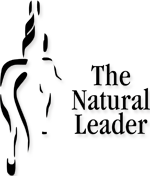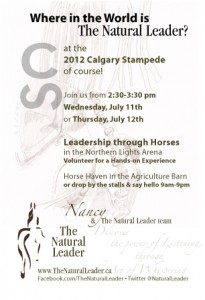 Schwung Isn’t that an awesome word?
Schwung Isn’t that an awesome word?
A few of the definitions you will find are momentum; swing; flourish or impulsion. A German word more often heard in dressage circles, Schwung is much more than any one of those words. The fourth level of the dressage training scale, Schwung refers to “the circuit of energy from the rider through the hind end to the front end of the horse.” or the fluid and seemingly effortless motion of horse and rider moving as one. Successful development of the foundational elements of knowledge, practice and awareness determine if you ever achieve Schwung.
It is this very combination that relates so perfectly to the concept of presence and the art of leadership.As with leadership, the dressage scale is both linear and cyclical. When one point, activity or task is achieved with one individual we have the opportunity to go through it in a similar but different fashion with another. Dressage is the constant pursuit of self improvement.
Relaxation the foundation and first stage of the training scale. This stage is about forward movement and gaining comfort in the company of each other, developing confidence and creating the willingness to learn. Like the foundation of leadership it is about a relationship based on a common language and trust.
Rhythm is about being able to maintain forward motion with clarity and understanding as the tasks become more complex. Here we begin to ask more of the horse and in turn a balance in the roles and responsibilities in the relationship. As we begin to delegate more we can see where another’s behaviour might be a reflection of our request. You are developing your Awareness of Others and your ability to be flexible as you assist someone else to be their best.
Contact is about confident forward motion with a soft, steady connection between horse and rider. Relaxation and Rhythm in place the horse and rider find a common balance point. Here we begin to truly delegate responsibility, encouraging the horse to offer their best.
Ironically Contact is where most relationships begin. Be it horse or human, this is where we know what it is supposed to look like and in the effort to get results we resort to control. In horsemanship it looks like bigger bits, spurs and hard hands, in leadership it is about titles and how much we know and just doing it ourself.
Letting go of the impulse to “take control” is a tough one as it requires us to be confident in the face of the unexpected. It should be about channeling the forward energy and the potential of what it could be. The greatest challenge comes in trusting ourself first and being willing to take the time it takes. Reaching Schwung requires a high degree of self awareness and confidence.
While achieving Schwung may be a goal, it is not the final stage of the Dressage Training Scale. The beauty in choosing an art form is there are so many ways to interpret and apply what you learn. There are no end points in fine horsemanship or leadership, there is always a new opportunity to achieve the seemingly effortless way of being.Achieving Schwung is my current journey in the arena and through the written word. I find Schwung, then I feel like I lose it, It is taking longer than I thought it should it, then again I never realized how much I had to learn. Thank you for joining me on this path.









